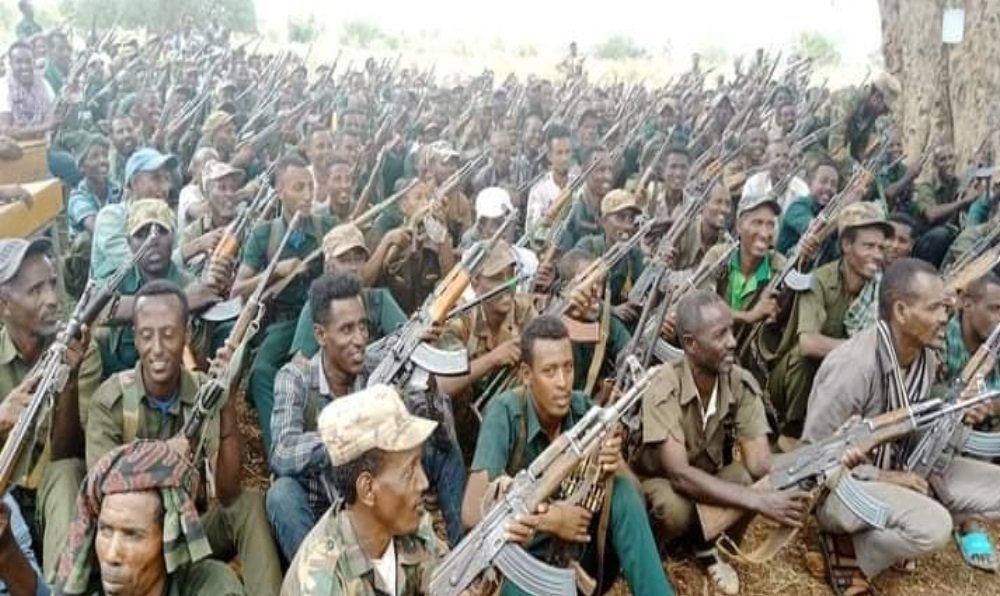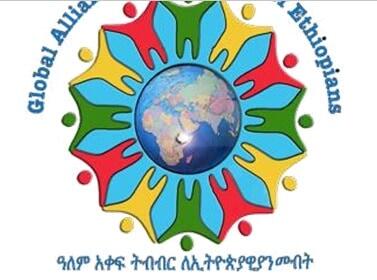
Messay Kebede
All the extensive research work I have done on Ethiopia’s sociopolitical and cultural evolution has brought me to the belief that the evolution cannot be understood in purely rational terms. That is why the use of the resources of psychoanalysis, notably of the impact of the unconscious on human thinking and behavior, looked to me increasingly relevant to decipher some of the peculiar developments of the country. This short paper is one such attempt.
For quite some time, it has been clear to many of us that Ethiopian politics, with all its troubles, reversals, and turbulences, revolved around politicians and intellectuals coming from the three ethnic groups of Oromo, Amhara, and Tigray, a state of things exposing a grave imbalance, to wit, the marginalization of the southern peoples. Given that would-be representatives of these three ethnic groups are the main players, it is fair to say that they are the principal troublemakers, the problem child of Ethiopia. All three are stuck in a fight over the control of the country that can only usher in extensive internal conflicts whose endgame could be civil war and fragmentation. Hence the question of this paper: in the face of these highly probable ominous outcomes that benefit no one, why are the belligerent parties unable to reach some form of accommodation that could bring peace and stability, thereby benefiting themselves as well as all other ethnic groups? The more the ruinous rivalries intensify, the more the question becomes perplexing, even to the point where one, ceasing to look for rational explanations, feels compelled to delve into irrational, unconscious motivations.
Seeing the extensive damages caused by conflicts between the three groups, what else could seem an appropriate explanation but the one that involves some mental or emotional disorder preventing leaders and followers from assessing the situation soberly and finding rational solutions to ward off the looming dangers? While the rivalry is going on, not only has the country come close to civil war and disintegration, but also the economy is gravely deteriorating, one major reason being the recurring nature of internal wars, for instance, the two most recent ones, in Tigray, Afar, and Amhara regions. Unsurprisingly, the fight for hegemony is standing in the way of democratic governance and accountability, whose consequences are the alarming abuses of human rights, worsening economic conditions, and the spread of all sorts of unlawful behaviors, like corruption, extortion, and illegal enrichment.
The Place of Resentment in Ethiopian Politics
One undeniable fact is that Ethiopian politics has turned into a zero-sum game since the initiation of modernization. It should not therefore come as a surprise that it inevitably breeds resentment among the losing party or parties. Indeed, an attentive observer who listens to the discourses of leaders and followers, reads their writings, and studies their behaviors, easily detects that resentment is the motivating state of mind common to the warring parties embracing ethnonationalist stands. This tells us that the ubiquity of resentment is neither an accident nor an emotional state peculiar to Ethiopia, but a fallout of the way politics is fought out in the country.
For the sake of clarity, let me first share what I mean by “ethnonationalist stands.” I call ethnonationalist a movement based on ethnic characteristics that flaunts quasi-nationalist aspirations within an already established national polity and that is often violent, secessionist, or in competition for the exclusive control of state power. Its extremist nature is revealed by its reluctance to share power on the grounds that it needs to protect its identity and interests. The question is: what is the origin of this extremism?
Let us take the case of Ethiopia since it furnishes a perfect example of the extremism of ethnonationalist movements. The mentioned Tigrayan, Oromo, and Amhara ethnonationalist movements all refer to painful mistreatments that are either ongoing or to which their “people” have been subjected in the past. The point here is not whether the mistreatments were real or imagined; in most cases, they were real, even if their accounts often take highly exaggerated forms. Rather, the focus should be on the fact that the feeling of being or having been mistreated so deeply infuses their ideologies and political views that they can be fully attributed to resentment. As a result, ethnonationalist movements harbor a profound anger that steers their political programs and practices toward the pursuit of revenge and retribution. Sadly, the resentment remains hidden, as it is camouflaged as a quest for justice and the restoration of equality.
Before going further, it is expedient to highlight the implications of resentment. Numerous studies define resentment as a complex emotional disorder induced by the feeling of being mistreated or wronged. Consequently, the relationships of resentful people with those who are believed to be responsible for the harm are filled with negative feelings like anger, hatred, bitterness. What needs to be underlined here is that these negative feelings are not expressed or acted out on the spot; for various reasons, they are suppressed. The longer they are suppressed, the more the negative feelings build up, a process that leads to self-blame and regret for letting ourselves get hurt. Such a process does not only intensify our negative feelings toward the offenders, but it also poisons our own lives. In a word, the suppression develops into an obsession, which means that it becomes increasingly difficult to let go of resentment.
In constantly reliving our humiliation, we deepen our anger and, in so doing, we become unable to find peace with ourselves. This inability to let bygones be bygones convinces us that the only way to get rid of resentment and reconcile with ourselves or restore our dignity is through the infliction of revenge against those who wounded us. Obviously, the conviction overlooks the path of forgiveness, which ultimately is the only way to move toward reconciliation with our offenders and, by the same token, to find peace with ourselves. By contrast, the path of revenge can only nurture resentment among those who are hurt in their turn, and this is obtained without the revengers finding the internal peace they want.
The Consequences of Resentment
It goes without saying that, at the political level, resentment and the need for revenge can hardly inspire a comprehensive policy yielding positive changes, that is, changes that embrace and serve all groups, including those perceived as offenders, thereby pursuing a nation-wide progressive agenda. The belief being that the hurt inflicted by mistreatment cannot be washed out unless the same hurt is inflicted on the perpetrators or their descendants, the aim is not only to get payback but also to make sure that the assumed wrongdoers never recover so that they cease to be future threats. To achieve this result, it is even perceived necessary to engage in a systematic attack on the most basic rights of said offenders. The more the measures hurt, the more the sense of implementing the right remedy cements, the consequence of which is that its disruptive and deleterious national outcomes are felt as positive results.
The most practical way to facilitate a systematic attack on designated people is to install a political organization that demarcates and singles them out, both as a group and as individuals belonging to the group. In a situation where all groups are mixed up and remain undefined because they carry the same label of, for instance, Ethiopians, not only is it difficult to target a group systematically, but it also downplays the intensity of the hate by creating the sense of a common belonging. What better political organization could be found to target a specific group than the ethnic demarcation of regions and the stratagem forcing everyone to identify the group to which he/she belongs? The term “Ethiopian” is so common and undifferentiated that it runs counter to the need of revengeful politics.
The defenders of the ethnic demarcation of regions and individuals retort by saying that my statement deliberately mischaracterizes ethnic federalism in Ethiopia. They argue that such a political organization is necessary for each group to use and develop its own language and culture and self-govern itself. I am not denying that demarcation can indeed be propitious to obtain the mentioned positive results, which are in line with the recognition and acceptance of diversity. However, as revealed in the course of the application of ethnic federation in Ethiopia, the demarcation was used less to promote self-rule and the harmonious development of all ethnic groups than to target specific groups. How otherwise can one explain the unprecedented explosion of interethnic conflicts, the displacement of people, and the ferocity of the attacks? When the demarcation is motivated by resentment, it does not say simply “us” and “them”; it quickly turns into “us against them.”
As already said, this eye for an eye policy does no more than plunge the country into the vicious circle of counter revenges, which usually take the form of armed rebellions on the part of those who now consider themselves the victims of the new policy. In other words, the spirit of revenge, instead of achieving the expected result, namely, the victims’ acceptance of submission, duplicates itself and generates the same anger. Another round of armed rebellion is thus in the making, and this renders the restoration of peace an unlikely possibility.
Ethiopia’s Different Forms of Resentment
Since different situations and people are involved, it is natural that resentment takes distinct aspects. From the earliest to the latest, the different aspects of resentment in Ethiopia are:
- A) The Derg’s Robinhoodism
The Derg’s revolutionary objectives assumed the marked feature of Robinhoodism from the get-go. The term means the intent of taking from the rich to give to the poor. It is not difficult to derive the objective from the social composition of the Derg’s members, which consisted of privates, noncommissioned officers, and junior officers. The members joined the armed forces mostly for economic reasons and shared a state of mind that harbored grudges against the imperial system, the nobility, the senior officers, and the high society of the time. Apart from officers who graduated from either the elite Military Academy of Harar or the Air Force, joining the armed forces offered one of the few outlets for high school or university dropouts or for those born into poor families.
Members of the Derg implemented their determination to punish the rich and the powerful thanks to the encounter of their resentment with the uprising of Ethiopian students. Students and intellectuals told them that what they were about to do was called socialism, which was then the dominant ideology of the time. Backed by this influential ideological justification, the Derg undertook a radical revolution that nationalized all lands, industries, banks, etc. It also unleashed a violent and ruthless repression against any form of resistance, be it peaceful or armed. It is not an exaggeration to say that the series of revolutionary changes that the Derg carried out to the extent of turning Ethiopian society upside down, has laid the ground for the occurrences and consolidation of all kinds of social dislocations and dissatisfactions, notably for ethnic discontents. All the more reason for ethnic discontents to escalate was that, despite all the revolutionary measures that the Derg took against the nobility and the upper class, it failed to rectify some important aspects of the imperial policy, such as centralization, Amharization, the dominant position of Amhara elites.
The major consequence of the Derg’s revolution was the progression of ethnic-based armed rebellions in the northern parts of the country. In Eritrea, the EPLF grew to the extent of becoming a powerful armed resistance capable of securing the intended independence from Ethiopia. A similar evolution took place in Tigray: the TPLF expanded to the point of commanding a formidable military resistance that chased the Derg’s administration and forces out of the region. Together with Eritrea, Tigray can be considered the birthplace of Ethiopian ethnonationalist movements. Here the driving force, especially in Tigray, is the feeling of being marginalized and put down by the Amhara elite, even though Tigray is considered the cradle of Ethiopian civilization.
- B) Mistreatment of Tigray
In the eyes of Tigrayan elites, not only did the Amhara elites steal their contributions to Ethiopian civilization, but they also deliberately marginalized Tigray politically and economically. The center of Ethiopia moved southward, away from Tigray, which became just a destitute periphery. This sense of being reduced to a peripheral existence offered Tigrayans no other way out than to leave Tigray, undergo Amharization, and move to southward regions. The last attempt to restore the legitimate status of Tigray was through the Woyanne rebellion in 1943, which was defeated with the help of the British. The long reign of Haile Selassie did nothing but aggravate the marginalization of Tigray at the expense of Showa and other regions, like Harar and Wollega.
Since the resentment of being ousted from one’s rightful place animated the TPLF, it inspired the revengeful policy of regaining control, of sitting again in the driver’s seat by dislodging the culprits, that is, the Amhara elites. In effect, the military defeat of the Derg was interpreted as a victory against the Amhara elites, even though nothing had more diminished the Amhara standing and status than the revolutionary measures of the Derg. To strengthen its new-found hegemonic place and prevent a future comeback of Amhara rule, the TPLF designed and implemented the ethnic demarcation of regions, the intent of which was the use of the stratagem of divide and rule. In this way, a group claiming to represent the minority ethnic group of Tigray could sustain its hegemonic role by pitting ethnic groups against each other, especially the two largest groups, to wit, the Amhara and the Oromo.
- C) Oromo Elites’ Claim to Succession
Following mass uprisings in Oromia and Amhara region, the EPRDF experienced an internal agitation as a result of which the TPLF lost its dominant position to Oromo representatives, and this led to the nomination of Abiy Ahmed as prime minister. At first, the new prime minister, though himself an Oromo, gave the impression of transcending resentment: he spoke of unity, togetherness, respect for the democratic rights of all Ethiopians, and promised the necessary reforms to put the country on the right path. Unfortunately, none of the promises saw the light of day; instead, the country witnessed an escalation of displacements, often due to violent attacks on various groups, especially on Amhara people in Oromia and elsewhere. On top of this, war broke out in Tigray between government troops and the TPLF’s regional army and expanded into the Amhara and Afar regions.
The devastating war lasted for two years and ended with a peace agreement. Yet, soon after, another war started in the Amhara region following the government’s decision to disarm the Amhara militia and other armed groups. The open hostility of the government toward the Amhara people manifested through various acts, including periodic attacks on the Ethiopian Orthodox Church and its followers and arbitrary imprisonment of Amhara activists and political figures. It was unmistakable that a resurgence of resentful policy was occurring, with the Oromo wing of the new Prosperity Party using all the repressive means to assert its hegemony over the country, especially over the Amhara elites.
Nothing could better show the negative consequence of resentment than the cascade of deleterious developments that descended upon the country. Since taking the leadership, the Oromo wing of PP has ignited two major wars that severely weakened the federal state and the mentioned regions. Intensification of ethnic clashes, massive displacements, lack of peace, sprawling lawlessness, as witnessed by the multiplication of kidnappings and ransom demands, and the spread of banditry in all forms, not to mention the appalling deterioration of human rights, are some of the consequences of the weakening. Add to this the horrible state of the economy in conjunction with snowballing corruption and mismanagement, and you have an accurate picture of how fast the threats of civil war, warlordism, and anarchy are advancing under Abiy’s rule.
Such was not the case under the hegemonic rule of the TPLF. Despite pursuing a divisive policy that grossly favored Tigrayan elites, it maintained a political accommodation that encouraged neither the breakup of the country nor open ethnic clashes. It was obvious to the leadership that there were limits beyond which it could not go in the pursuit of their interests and supremacy. Moreover, the limitation derived from the fact that they could not overstep it without Tigrayans hurting themselves. Because they shared with the Amhara a long common past and basic values, mostly because they adhered to the same religion and the same socio-political system for a long time, however strong their resentment may be, there was a limit they could not cross.
The question is then: why did the relative stability reached under the TPLF disappear in such a short time? Clearly, because it is very hard to find a rational explanation for the disastrous results, one must appeal for an emotional disorder or neurosis that prevents the ruling wing of the Prosperity Party from pursuing a policy that could assert its hegemonic position while also avoiding the destruction of the country. Indeed, what jumps to mind is that when resentment and the need for revenge take the lead, it is no longer about governing in addition to serving one’s best interests. Rather, it is primarily about delivering revenge for past abuses perpetrated essentially, in the case of Ethiopia, by Amhara elites.
Accordingly, the policy is considered as good and justifiable (no matter the cost) so long as it hurts the targeted people or elites. It is not a correction of past abuses; it is retribution deemed necessary to wash out the hurt and the humiliation. The satisfaction is not in the positive results; it is in the punishment it inflicts. The worst thing in all this is that Oromo ethnonationalists want to drag the Oromo people, especially the youngsters, into their depravity by inflaming their minds with manufactured or exaggerated accounts of history and anecdotes. In so doing, they naturally intend to make them followers and accomplices.
- D) Amhara’s Sense of Victimhood
As could be expected, the manifold and growing verbal and physical attacks on Amhara people and elites triggered defensive reactions that progressively took an ethnonationalist tone among some Amhara ethnic groups. Though recent compared to the two others, Amhara ethnonationalism spread like wildfire under the hegemonic rule of the Oromo wing of Prosperity Party, as evidenced by the rise and tentacular growth of armed groups known as Fano. Even if these groups cannot be identified as extremists, they are all inspired by the plight of Amhara mistreatment and are at present bringing havoc to Abiy’s troops stationed in the Amhara region. It is important to note here that the Amhara elite has in the past blended supremacy over other identities with assimilation. However, it cannot be accused of engaging in systematic attacks designed to kill and displace ordinary people, let alone of committing genocide.
The loss of the hegemonic status of the Amhara elites and the disparaging accounts of Amhara expansion under Menelik––officialized since the revolution and amplified by the TPLF––combined with the killings and displacements of ordinary Amhara citizens under the rule of the Oromo wing of Prosperity Party, were all propitious to the gestation of resentment, to the sense of being dethroned from one’s rightful place. Both the dethronement and the subsequent governmental policy designed to weaken and subdue the Amhara ethnic group are naturally perceived as acts of revenge.
The mistreatment looks all the more unwarranted to the Amhara as they rightfully claim that they are the major architects of modern Ethiopia through their expansion, their resistance against colonial forces, and their policy of nation-building. At least, southern peoples should, in their eyes, recognize that Menelik’s expansion protected them from colonial rule. In particular, the Oromo should admit that their incorporation into the Ethiopian empire safeguarded them from falling prey, not only to colonial subjugation but also to fragmentation under different colonizers. Yet, all this is unrecognized; instead, Amhara elites are painted as ruthless invaders who acted and behaved as black colonizers.
The sense of being wrongly accused is further supported by the Amhara educated elites’ eminent role in the overthrow of the imperial regime and their well-known and decisive participation in favor of land reform expressly designed to liberate southern and especially Oromo peasants from the yoke of tenancy. Considering the all-round and unmatched importance of Amhara elites at that time, it is fair to say that, without the active involvement of Amhara students, intellectuals, and servicemen, none of the social changes that ended the “feudalism” established by their recent forefathers could have come to pass. This is to say that the Amhara resentment is fused with the sense of betrayal and lack of appreciation for the active role played by Amhara educated elites in the fight to achieve equality among ethnic groups.
During the TPLF rule, the Amhara, though they resented the loss of their hegemonic position, the ethnicization of Ethiopia, and the fact that they were constantly singled out as responsible for the pitiful state of the country and demonized verbally, they did not feel threatened in their Amhara ethnic attributes and dignity. Not so with the Oromo hegemony: the issue has become existential in the sense that the purpose is not only to prevail over them but also to diminish and subdue them, the end goal of which is to permanently incapacitate them. As many Amhara activists are saying, the issue is survival, not in the sense of physical survival, but in the sense of being subjected to all sorts of mistreatment forcing them to lose respect for themselves.
The Amhara anger sees the ethnicization of Ethiopia as nothing but a deliberate policy to pit other ethnic groups against the Amhara. For this reason, it has to be done away in favor of a political system based on citizenship and on the recognition and recovery of Amhara’s legitimate place in Ethiopian society. Obviously, the principle of citizenship and the statement prioritizing Amhara identity are contradictory. Prioritizing an ethnic identity does not sit well with citizenship, given that the latter does not define a person in ethnic terms. This discordance is the sign of an emotional drive that escapes rational supervision.
To conclude, if anything, the birth and growth of Amhara ethnonationalism is a perfect confirmation of the unviability of a political system inspired by resentment and the pursuit of retaliation. Such a policy always backfires: to mistreat those who have mistreated us does no more than ignite the same resentment and put the country in a vicious circle of internal conflicts and wars. We saw it with Oromo and Tigrayan ethnonationalist political choice: it further divided ethnic groups and ended by generating the bellicose Amhara ethnonationalism. Evidently, where resentment prevails, it stands in the way of genuine negotiation since there cannot be any compromise so long as the emotional state remains active.
One may think that the source of the problem being the ethnic demarcation of the country, the simple solution is to drop the ethnic criterion in favor of citizenship, a solution advocated by many well-intentioned people. The solution overlooks two major issues: 1) the ethnic consciousness is so crystallized in Ethiopia that it cannot be just pushed out without triggering conflicts; 2) without dealing with the emotional state of resentment, no rational and accommodative solution is acceptable to the rival parties. These conditions abundantly confirm the extent to which a viable political solution depends on the recovery of a healthy emotional state, that is, on the determination to let bygones be bygones.


















Dr. Mesay,
You said “All the extensive research work I have done on Ethiopia’s sociopolitical and cultural evolution has brought me to the belief that the evolution cannot be understood in purely rational terms…” when you start your “psychoanalyis, which in fact is not close to psychoanlysis in real terms. The father of psychoanalyis, Sigmund Freud, could have laughed non-stop had he been alive and seen the title of your article and read the content below it.
I read the whole article but you did not show us or cited your research anywhere in this article.
What research, where and when have you done? What methods you used to do the research and where was it published? Are you misusing the term research as you misused the discipline of psychoanalyis?
You just rewrote what you and others have been preaching for the last 35 years and nothing new. As before, you pointed your finger to others, but it does not seem that you tried to do some soul search for yourself. Thank you.
Professor Mesay,
Your attempt to equate the Amhara Genocide(which is still an ongoing crime) with TPLF and OLF’s baseless claim is NOT psychoanalyis, but an opportunistic futile attempt to be liked by all sides. Show (not tell) us any evidence that you have to substantiate what OLF or TPLF claim Amhara did to them? You are watching what Amharas are experiencing as we speak, but is accepting OLF’s and TPLF’s fabricated claim with no shred of evidence expected from a philosopher academician of your caliber?
“For quite some time, it has been clear to many of us that Ethiopian politics, with all its troubles, reversals, and turbulences, revolved around politicians and intellectuals coming from the three ethnic groups of Oromo, Amhara, and Tigray, a state of things exposing a grave imbalance, to wit, the marginalization of the southern peoples.” So true and than you professor Massey for stating the obvious.The elites from the trios were and still lead and the main protagonists of the country’s ethno nationalist and extremist political debacle. Not only southern regions, though large population masses, marginalized but also the more strategic locus of eastern parts as well ,who are shutout and marginalized for so long. I am still wondering where these poltical resentment and vindictiveness of ethno-nationlist extremists might lead to except total disentegrationbof the nation. Further, the main difference between the TPLF-Tigrain versus PP-Oromo ethno-nationalists though that as if the later ones are unable to differentiate their best interest, never mind the common one, and hellbent for wholesale destruction and outright vandalism of the country as a whole. It reminds something and images of like when some rioting and angry of historcally marginalized African-Africans in ghettos accidentally burn down their own neighborhoods and houses overlooking the negatives impact it has on their own neighborhood, lives and immediate interest. By the same token, the TPlF’s rule and political modus operandi was tricky as you mentioned. It was very calculated game to ensure their own best interest at first along with some for others depending in the circumistance and objectives and that is why the national security apparatus and civil order were more or less functioning. It is no more with Abiy’s regime and his PP-Oromo ethnic clique.
This article is not written out of ignorance but out of a spirit of malice and vindictiveness. Very sad to see a literate person degenerate like this.
The piece regarding Tigray marginalization that suggests that Tigrayans migrated southwards in search of opportunity because of Amhara exploitation is, to put it mildly, sick. Out-migration from resource-challenged Tigray reached its highest ever under the rule of the TPLF, when tens of thousands of homes in Tigray were abandoned with their doors and windows sealed as their residents left for better life in the South. It would require a book to respond to this “Walelign” article.
ዶ/ር መሳይ ምኒሊክ 5 ሚሊዮን ኦሮሞ ገደለ የሚለውን የኦነግ እጅ እግር የሌለው ወሸትና ምኒሊክ ትግራይ ዝናብ እንዳይዘንብ ከልክሎ በድርቅ ፈጀው የሚለውን የትህነግ ቱሪናፋ የሚያምን ይመስላል፡፡ አወይ! አውይ!